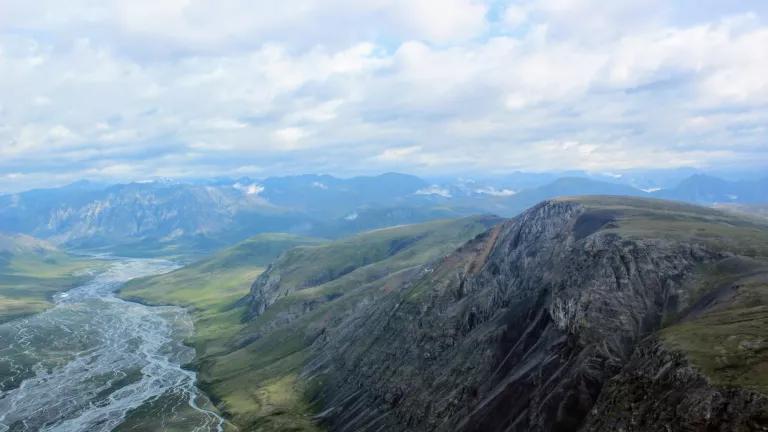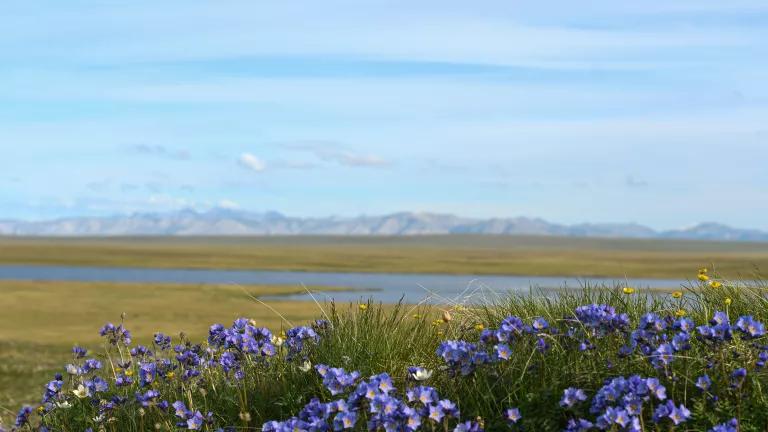
Shell's drill rig, the Kulluk, ran aground New Year's Eve.
U.S. Coast Guard Petty Officer 3rd Class Jonathan Klingenberg.
As Secretary of State John Kerry headed to the Arctic Council meetings in Kiruna, Sweden this week, he described the way melting ice is altering life in the Arctic. “Our warming planet means the Arctic's ecosystem is experiencing significant, rapid shifts with far-reaching consequences,” he wrote. “All of the changes in the Arctic must change the way we approach the region.”
The Arctic most definitely needs a new approach to stewardship—one that can protect its natural wonders and ensure it remains resilient in the face of global warming. Yet the National Strategy for the Arctic Region that the White House released last week in advance of the Arctic Council meetings does not deliver what the region requires right now.
Despite Shell Oil’s recent drilling fiascoes in the Arctic Ocean and mounting scientific evidence that ecosystems are under stress, the administration has outlined a plan that could open the Arctic to even more harm.
The new strategy emphasizes U.S. security interests in the Arctic. That makes sense in the light of the Arctic’s international significance. But then the administration’s plan makes the mistake of equating security with drilling for oil in the region. In fact, the Arctic Ocean may be the least secure place on Earth to drill for oil—as Shell confirmed when its effort to drill there resulted in one failure after another last summer. Moreover, America won’t ever achieve energy security by increasing our dependence on a commodity that is traded on a volatile international market. True energy security means beating our oil addiction and investing in renewable energy and efficiency measures.
Shell's drill rig, the Kulluk, ran aground near Alaska's Kodiak Island on New Year's Eve.
Instead of looking to the Arctic for more oil, the administration should freeze drilling approvals and undertake a thorough, clear-eyed review of whether offshore drilling can ever be done safely in the region. The environment is known for twenty-foot seas, gale-force winds, dense fog, and sub-freezing temperatures much of the year. Arctic waters are also packed with ice for up to eight months each year, and no technology has proven capable of cleaning up an oil spill in ice.
The disastrous BP oil spill occurred in the ice-free waters of the Gulf of Mexico—a much more accessible location with industry infrastructure readily at hand. Now imagine a similar spill in the Arctic lease sites where the closest Coast Guard base is 1,000 miles away.
A sober, factual re-evaluation of offshore drilling should lead to the conclusion that, for both environmental and security reasons, the Arctic Ocean has no place in the United States energy future.
The administration should take clear steps to protect the region’s rich and vulnerable ecosystems from the full suite of development threats they face. Though Arctic Strategy mentions important conservation goals including Arctic stewardship and integrated management, it discusses them at the broadest level. The Arctic Strategy released by the Bush Administration offered more details about how the U.S. could strengthen environmental protection and address challenges like the impact of marine noise on whales. The Obama Administration’s strategy on the environment, however, is remarkably devoid of substance—a marked contrast with the unambiguous call for more oil development.
It puts a welcome if ill-defined emphasis on scientific research and integrated management, but we need action to protect this most vulnerable part of our planet. We need an affirmative plan to identify biological hotspots, create protected areas in the ocean, and preserve landscapes that help wildlife become resilient in the face of climate change.
Secretary Kerry was committed to making progress this week at the Arctic Council meetings—a gathering of foreign ministers from the eight Arctic nations and several indigenous groups. As someone concerned about climate change, the oceans, and the Arctic region, Secretary Kerry is poised to help the U.S. become a leader in sound Arctic management. But the U.S. cannot urge other countries to protect the region’s environment if we are not making concrete commitments to do the same in our own Arctic waters and landscapes.
Now is not the time to ignore the hazards of unbridled energy development and unchecked climate change. There is simply too much at stake in the Arctic. It is home to the world’s last wild ocean, some of America’s most breathtaking natural treasures, and an indigenous culture thousands of years old. The Arctic is also the air conditioner for the world—as it warms our communities suffer more extreme weather events.
If we fail to protect the Arctic in this time of rapid change, we risk losing one of the crowning jewels of America’s natural heritage. We have a responsibility to preserve this spectacular and fragile region.


